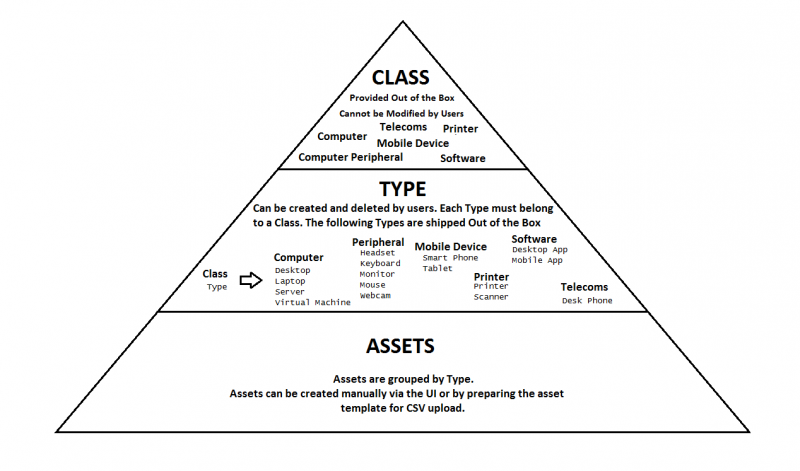Understanding the Asset Structure
Home > Service Manager > IT Asset Management > Understanding the Asset Structure
Introduction
- The Hornbill Service Manager asset structure can be considered as in the following diagram:
Asset Classes
At the top of the hierarchy are the pre-defined asset classes:
Computer, Computer Peripheral, Mobile Device, Network Device, Printer, Software, Telecoms.
The Asset Classes are predefined and cannot be modified.*
The Asset Class is an important consideration when creating a new Asset Type, as the Class chosen will dictate which attributes are available to populate when adding your individual Assets beneath an Asset Type.
*If Customers Identify additional Asset Classes, or Class specific Attributes which they require and are not currently catered for, please inform Hornbill and we will review and if accepted look to include in future updates.
Asset Types
Default Asset Types are provided for each Asset Class for customers to use.
Customers can create any additional Asset Type to sit within an Asset Class. The Asset Type can be created and can be configured to use all, or only the relevant Asset Class Attributes required for the specific Asset Type. When defining the Asset Type you can also specify which of the Asset Type attributes are mandatory, and must be populated when creating an asset of this Type. Asset Types are covered in more detail Here
Assets
Assets can be created against any available Asset Type, details on adding, editing or deleting Assets is covered Here.
